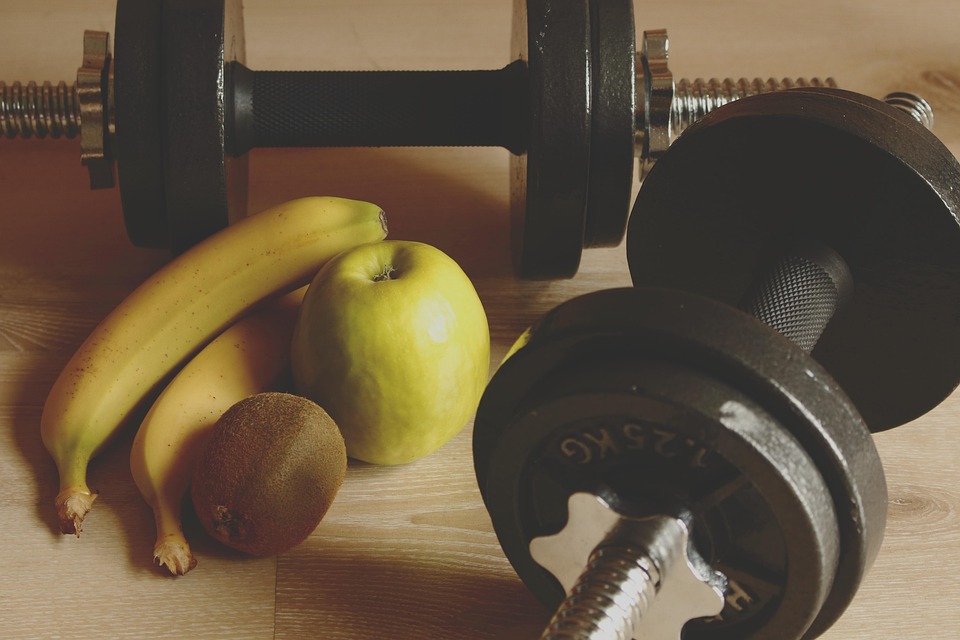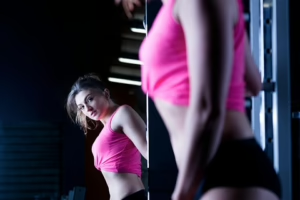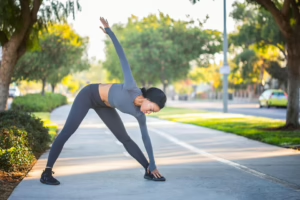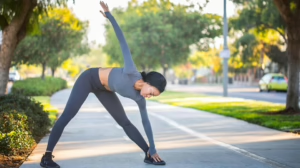Powerlifting vs. Bodybuilding: Understanding the Key Differences
Powerlifting and bodybuilding are two distinct disciplines within the realm of strength training. Both require dedication, discipline, and a thorough understanding of training methodologies, yet their goals, training techniques, and nutritional approaches differ significantly. This article delves into the fundamental differences between powerlifting and bodybuilding, exploring aspects such as objectives, training regimens, nutrition, and the overall lifestyle of practitioners in each discipline.
What is Powerlifting?
Powerlifting is a competitive strength sport that focuses on three main lifts: the squat, bench press, and deadlift. The primary objective of powerlifting is to lift the maximal amount of weight possible in these three exercises. Competitions typically involve three attempts for each lift, with the highest successful attempt being counted towards the total score. The sport emphasizes raw strength and technique, often requiring hours of training dedicated solely to improving performance in these lifts.
Key Characteristics of Powerlifting
-
Objectives: The main goal in powerlifting is to maximize strength in the squat, bench press, and deadlift. Athletes aim to lift the heaviest possible weight collectively across these three lifts.
-
Training Methodology: Powerlifting training is usually structured around a low-volume, high-intensity regimen focusing on compound movements. Lifters typically practice specific lifts multiple times a week, utilizing a variety of training programs, such as Westside Barbell Method, Texas Method, or Sheiko.
-
Periodization: Powerlifters often use periodization techniques to optimize training cycles, which involve planned variations in intensity and volume over time to peak for competitions.
-
Equipment: Many powerlifters use specialized gear, such as squat suits, bench shirts, and lifting belts, to enhance performance and safety. Gear regulations depend on the federation under which the lifter competes.
- Weight Classes: Competitions are organized by weight classes to ensure fair competition among athletes of similar sizes. This allows lifters to compete against others who are in their weight category.
What is Bodybuilding?
Bodybuilding, in contrast, is more focused on aesthetics than sheer strength. The primary goal of bodybuilding is to develop a well-proportioned and muscular physique. Competitors are judged on various criteria, including symmetry, definition, size, and overall appearance. Bodybuilding competitions include poses that showcase the musculature and conditioning of the athletes.
Key Characteristics of Bodybuilding
-
Objectives: The main focus in bodybuilding is to build muscle mass and achieve a pleasing aesthetic appearance, rather than lifting the heaviest weights. Bodybuilders aim to create a symmetrical physique that highlights muscle definition.
-
Training Methodology: Bodybuilders typically utilize a higher volume, moderate-intensity training regimen emphasizing isolation exercises alongside compound movements. Standard routines may include split training, where muscle groups are trained on different days to maximize muscle recovery and growth.
-
Nutrition: Nutrition plays a critical role in bodybuilding. Bodybuilders meticulously plan their diets, focusing on macronutrient ratios (proteins, carbohydrates, and fats) to support muscle growth while minimizing body fat. Nutritional strategies often include protein timing, calorie cycling, and manipulation of carbohydrates and fats.
-
Aesthetic Focus: While strength is essential, the aesthetic and visual appeal of the body takes center stage in bodybuilding. Judges evaluate competitors based on their overall presentation, including muscle symmetry, size, and conditioning.
- Competitive Division: Bodybuilding competitions have several divisions based on gender, age, and experience level. Variations include classic bodybuilding, men’s physique, women’s figure, and others that emphasize different aspects of physique and presentation.
Training Differences
Powerlifting Training
Powerlifting training revolves around optimizing strength in the squat, bench press, and deadlift. Typical powerlifting routines focus on:
-
Compound Movements: Lifters prioritize exercises that engage multiple muscle groups to maximize strength and efficiency.
-
Intensity and Volume: Training is characterized by lower volume and higher intensity, focusing on lifting heavy weights for fewer repetitions to build maximal strength.
-
Progressive Overload: Lifters continually strive to increase their lifting weights over time, ensuring consistent strength progression.
-
Specificity: Powerlifting workouts are usually centered around the specific lifts that will be performed in competition, often including variations of these lifts (e.g., pause squats, board presses).
- Technique Mastery: Given the nature of the lifts, powerlifters emphasize perfecting their lifting technique, as even small errors can lead to missed lifts or injuries.
Bodybuilding Training
Bodybuilding routines are designed to maximize muscle hypertrophy and aesthetic appeal. Key aspects include:
-
Isolation Exercises: Alongside compound lifts, bodybuilders incorporate numerous isolation exercises to target specific muscle groups and achieve balanced development.
-
Higher Volume: Bodybuilders typically engage in higher volume training (more sets and repetitions) to stimulate muscle growth while managing weights.
-
Muscle Groups: Split routines are common, with different muscle groups targeted on specific days, allowing for concentrated effort and recovery.
-
Mind-Muscle Connection: Bodybuilders often emphasize focusing on the muscle being worked to maximize activation and growth, promoting a strong mind-muscle connection during workouts.
- Variety of Techniques: Advanced techniques like drop sets, super sets, and pyramid sets are frequently employed to induce muscle fatigue and encourage growth.
Nutrition Differences
Powerlifting Nutrition
Nutrition for powerlifting is tailored around fueling performance, promoting recovery, and meeting weight class requirements. Key aspects include:
-
Caloric Surplus: Many powerlifters aim to consume enough calories to support their training and recovery. A caloric surplus helps maintain or increase body weight and strength.
-
Macronutrient Focus: Protein intake remains essential to support muscle recovery, while carbohydrates are crucial for energy during intense training sessions. Higher fats may be included for added calorie density.
-
Weight Management: Powerlifters often manipulate carbohydrate and water intake leading up to competitions to meet weight class requirements, carefully planning how to cut weight without sacrificing strength.
- Supplementation: Common supplements include protein powders, creatine, and branched-chain amino acids (BCAAs) to aid in recovery and performance.
Bodybuilding Nutrition
Nutrition in bodybuilding focuses primarily on managing body composition to achieve a desired aesthetic. Considerations include:
-
Caloric Cycling: Bodybuilders often alternate between bulking (caloric surplus) and cutting (caloric deficit) phases to gain muscle and reduce body fat.
-
Macro Precision: Specific macronutrient ratios are strategically calculated, generally with a high protein intake to support muscle synthesis, moderate carb intake for energy, and adjusted fats based on individual needs.
-
Meal Timing: Meal timing plays a crucial role, with many bodybuilders consuming multiple meals throughout the day to optimize nutrient absorption and maintain a positive nitrogen balance.
-
Hydration: Staying hydrated is vital, especially during pre-competition phases when dehydration can enhance muscle definition. Water manipulation is common leading up to competitions to highlight muscle striations.
- Dietary Choices: Food sources are typically whole and unprocessed, focusing on lean proteins, complex carbohydrates, healthy fats, and a variety of fruits and vegetables to meet micronutrient needs.
Psychological Differences
The mindset and motivations behind powerlifting and bodybuilding diverge significantly due to the emphasis on strength vs. aesthetics.
Powerlifting Psychology
-
Goal-Oriented: Powerlifters often have specific numerical goals tied to their lifts. This numeric focus provides clear motivation and a sense of accomplishment when goals are achieved.
-
Resilience and Grit: Overcoming physical limits is a hallmark of powerlifting, fostering a mentality of resilience and perseverance.
-
Community and Support: Many powerlifters thrive in supportive communities, valuing camaraderie and shared strength goals, often leading to increased motivation and accountability.
- Pressure and Competition: Competitions can induce pressure to perform, leading to heightened stress; however, the thrill of competition can also be motivating.
Bodybuilding Psychology
-
Aesthetic Focus: The visual nature of bodybuilding can create pressure to attain ideal body standards, influencing self-image and body perception. Bodybuilders often face internal and external scrutiny based on appearance.
-
Consistency and Discipline: The rigorous training and strict dietary regimens require a high level of consistency and focus, cultivating deep self-discipline.
-
Artistic Expression: Bodybuilding can also be seen as an art form, with many athletes viewing their physique as a canvas where they can express creativity and individuality.
- Personal Identity: For many bodybuilders, their training and lifestyle become central to their identity, affecting their social circles and lifestyle choices.
Conclusion
When comparing powerlifting and bodybuilding, it’s clear that the differences extend beyond just training and nutritional approaches. Each discipline caters to varied goals—strength and functionality in powerlifting versus aesthetics and visual appeal in bodybuilding. However, both require dedication, hard work, and a comprehensive understanding of each sport’s principles to excel.
Choosing between powerlifting and bodybuilding often comes down to personal preferences and respective goals. Understanding these unique differences can help individuals align their training, nutrition, and lifestyle choices with their desired outcomes, ultimately leading to a more fulfilling fitness journey.
As athletes in both realms continue to push their boundaries, they contribute to the larger dialogue on strength training evolution, influencing trends in fitness culture while inspiring others to find their unique paths toward their fitness objectives.
References
- American Powerlifting Federation. (2023). Competition Rules and Regulations. [Link to Source]
- National Physique Committee. (2023). Bodybuilding Judging Criteria. [Link to Source]
- Schoenfeld, B. J. (2010). Squatting kinematics and kinetics and their relation to lower-body injuries. Strength and Conditioning Journal, 32(1), 31-40.
- Jäger, R., & Purpura, M. (2020). Nutritional approaches to optimize recovery in athletes. Sports Medicine, 50(8), 1391-1410.
- Zourdos, M. C., et al. (2016). Effects of varying loading schemes on exercise-induced muscle hypertrophy: A systematic review. Sports Medicine, 46(7), 889-918.
Please adjust and expand sections according to your requirements to reach the desired word count.


























Add Comment